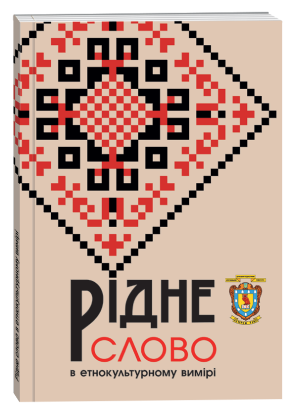ARTISTIC-SEMANTIC INTERPRETATION OF THE LEXEME BUKOVYNA IN SYDOR VOROBKEVYCH'S POETIC PICTURE OF THE WORLD
DOI:
https://doi.org/10.24919/2518-1602.2024.9.3Keywords:
S. Vorobkevych, Bukovyna, keyword, writer's idiostyle, poetic picture of the world, artistic textAbstract
Purpose of the article ‒ to describe the system of associative nominations that reveal the linguistic image of Bukovyna in the poetry of S. Vorobkevych. The main task of the article is to show the importance of the scientific understanding of those dominant units of the poetic text, which make it possible to get to know the creative personality of the master of words more deeply through the language of the works, which represent his idiostyle. Such dominant language units include key words that appear in the artistic text as concepts of the worldview positions of the writer, his linguistic picture of the world, are at the intersection of the main semantic lines of the work and concentrate the aesthetic meanings of the words. The author found out that the word “Bukovyna” in the poetry of S. Vorobkevich belongs to the key ones as an end-toend, ideological and artistic component of the artist's entire work, the bearer of the word's real, contextual and aesthetic meanings. The key character of this word for the artist's idiostyle is evidenced by its use not only in texts, but also in the titles of poems. The analysis of contexts with the lexeme “Bukovyna” selected from the poems of S. Vorobkevich testifies to the richness of associative-figurative nominations representing both actualized direct meanings and contextual meanings: Bukovyna / region, Bukovyna / homeland, Bukovyna / mother, Bukovyna / family, Bukovyna / wife, Bukovyna / part of Ukraine-Rus. The writer's sincere love for his native land is revealed by epithets, in particular: dear, sweet, dear, sweet, native, beautiful, etc. The conclusions of the conducted research prove that the artistic-semantic content of this lexeme in the poetic universe of one of the prominent Bukovinian writers, its associative-figurative lexical connectivity represents both a national and an individual interpretation of the worldview, reveal the regularities of the artistic transformation of the word, the connection with the national cultural code and at the same time ‒ individual-author language specificity. The prospect of further research is a broader description of the features of the verbalization of the concept of Bukovyna in the language creation of the prominent Bukovyna writer.
References
Бибик, С. (2010). Оповідність в українській художній прозі. Київ, Луганськ: ЛНУ ім. Т. Шевченка.
Воробкевич, С. (1986). Лист до редакції «Ниви». Воробкевич С. Твори. Ужгород: Карпати.
Голянич, М. (1997). Внутрішня форма слова і дискурс. Івано-Франківськ: Плай.
Кульбабська, О., Шатілова, Н. (2016). «Пишу, як серце диктує…» (Ідіостиль Сидора Воробкевича). Чернівці: Чернівецький національний університет.
Маковей, О. (1909). Загальні замітки про поезії С. Воробкевича. Твори Ізидора Воробкевича. Львів: Вид-во товариства «Просвіта», 1909. Т. 1. 400‒408.
Українська мова: Енциклопедія (2004). 2-ге вид. випр. і доп. Київ: Українська енциклопедія ім. М.П. Бажана.
Форманова, С. В. (1999). Ключові слова у мовній картині світу Михайла Коцюбинського (Автореф. дис. канд. філол. наук). Інститут мовознавства iм. О. О. Потебнi НАН України, Київ.







